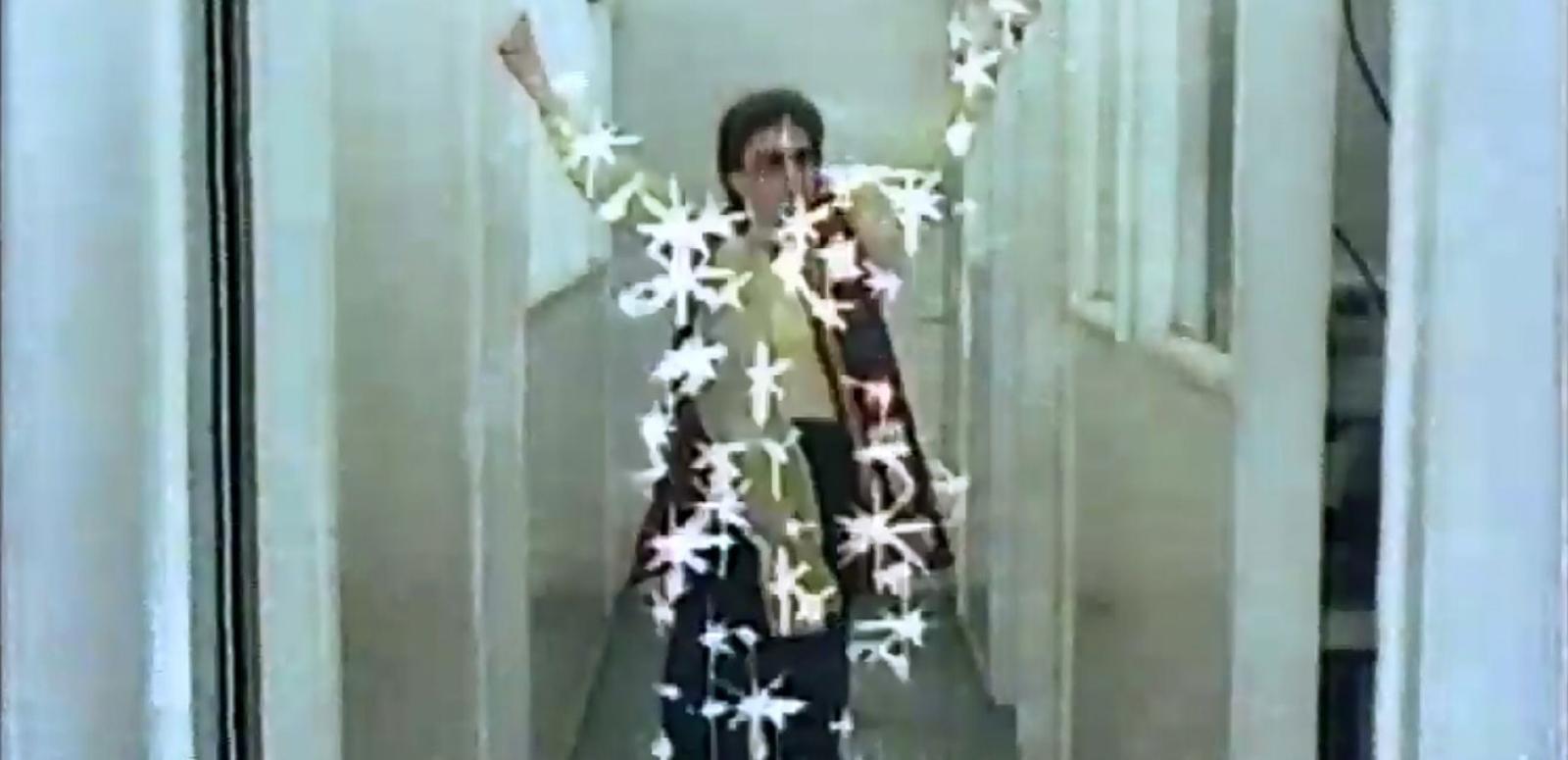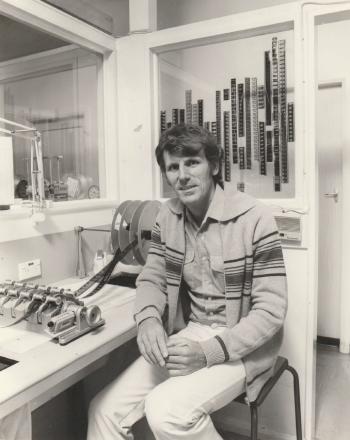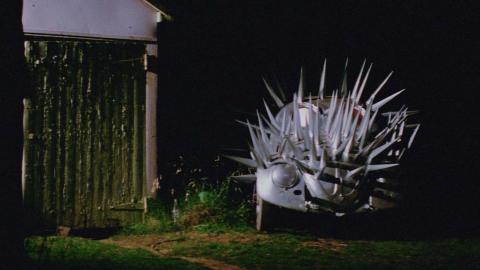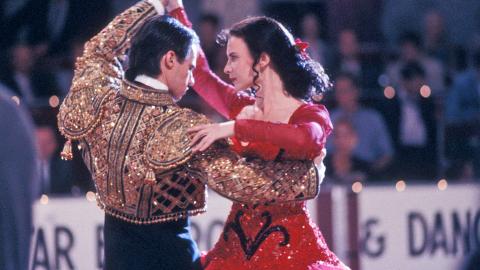

Killer cans and Babe: Making Optical Effects
During his 35-year career, Roger Cowland handled the optical effects for 265 Australian feature films, including the Mad Max series, Babe and Strictly Ballroom. As Optical Effects Specialist at Colorfilm in the 1970s and 80s, and Optical Effects Supervisor at Atlab in the 1990s, he also worked on many commercials, documentaries and short fiction films.
The world of Optical Effects
At Colorfilm, Roger found an old Kodak Cine Special Movie Camera gathering dust in an office and immediately thought, ’animation!’. This camera was known for its stop-motion capabilities and Roger decided to make a short film for a bit of fun and to demonstrate what could be done in Optical Effects at the time. Colorfilm management were so impressed by the result - The Optically Effected Client (1983) - that they used it for promotional purposes and screened it to clients around the world. You can watch the complete film below.
The Optically Effected Client by Roger Cowland
A couple of years later, Roger made another film, the horror comedy Cans (1985). Roger recalls:
'Cans evolved one night over a few beers with my partner, Barry McKnight, who wrote the intro. Both [Cans and Client] contained a lot of stop-motion animation so it was very time consuming. They were shot after hours in the Colorfilm Optical Department, unknown to management. I was lucky that the guys in the department were keen to help. We had zero budget and the 16mm film we used was old short ends, and I made the hinged cans and bloody props at home. I remember the Karo syrup blood got a bit messy at times! Cans was going to be a longer movie with other scenes planned, but [that didn't eventuate] due to the loss of some key stop-motion shots due to fogged film stock.'
Cans by Roger Cowland
Strictly Optical

I spoke with Roger about how he got his start, some of the directors he worked with and the state of effects now.
Have you always had an interest in optical effects?
As a kid I was always at the movies. I loved anything with stop-motion animation. My heroes were Ray Harryhausen and later Phil Tippett. I even used to make latex rubber models that I could animate. Mum wasn’t too pleased as these models needed to be baked in her oven!
Soon after starting at Colorfilm [in 1974] I met Bill Gooley who was the Feature Liaison Officer. My ability to visualise what effects a client required impressed Bill so much that he wanted me to exclusively handle the effects on all feature films that came through Colorfilm, which I did for the next 24 years.
You must have worked with many famous directors in your career?
I have some wonderful memories. Baz Luhrmann, along with Catherine Martin, came to the lab to go through some ideas for his first feature film, Strictly Ballroom. What they didn’t have was a main title design. After they left I gave it some thought and made up an animated title that I presented to them on their next visit. They loved it and it went into the final cut without any changes.
Optical effects are often required to fix up errors in filming. The Mad Max series had a few errors where crew strayed into camera view. The worst being in Mad Max Beyond Thunderdome (1985), where the town is blown up. When the rushes were screened the next day the horrified producers saw two pyro technicians in white coats hiding behind a wall. There was no going back on this as the town was no more. Fortunately a locked-off camera was used so we were able to paint out those offending techies.
In The Man From Snowy River there is a night scene with Kirk Douglas at a campfire. Editor Adrian Carr felt the scene was empty and wanted a mountain range and some stars. So I drew up a mountain range, added some stars and he was amazed with the final result. To this day I have never revealed how I did that ... it’s a trade secret.
In the clip below, Roger talks about visiting the set of Babe (1995):
Roger Cowland oral history (excerpt), 2003. NFSA title 589505
What are your thoughts on current digital effects and how they are achieved now?
Digital effects are a lot easier and you can see the results instantly, unlike film opticals where you had to wait a few days before seeing a result.
I do think though, that computer FX are over-used today. It seems that filmmakers have tossed out decent stories and filled their movies with ‘wow’ effects, which are very clever and spectacular but they quickly become boring.
Roger retired in 1998 but continues to make award-winning documentary and wildlife videos.
The National Film and Sound Archive of Australia acknowledges Australia’s Aboriginal and Torres Strait Islander peoples as the Traditional Custodians of the land on which we work and live and gives respect to their Elders both past and present.


